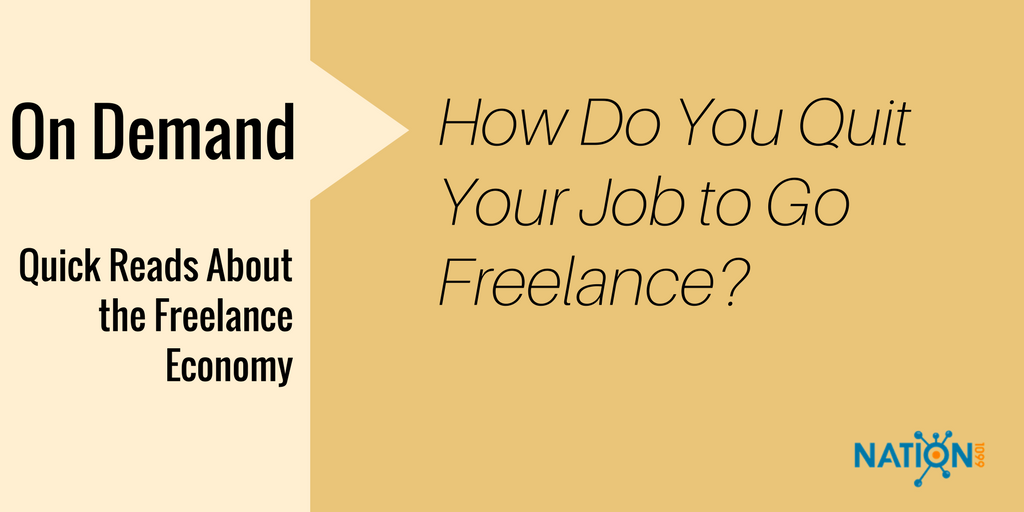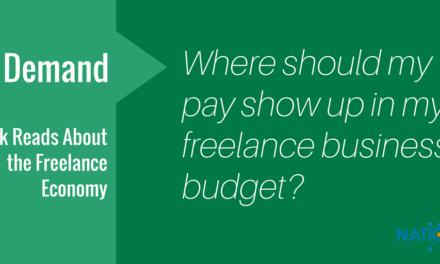If you are ready to go freelance or to begin working as an independent consultant, one smart way to quit your job is to ask your employer to be your first client in your new business.
Essentially, you are going to quit your job but try to keep the parts of the work that you value.
Turning your employer into your first client provides security during the transition for both you and the company. Naturally, it also helps lay down a financial foundation for your new business.
The goal when you quit your job to go freelance is to refocus your relationship with your employer on your strengths and interests and to maintain the relationship for the long-term.
Approximately 11 percent of the U.S. workforce is full-time freelance, and another 24 percent are employees in traditional role-based work who are freelancing on the side. That latter group will of course be the source of the projected 3.5 percent annual growth in the number of full-time freelancers.
In other words, many people aren’t leaving their jobs for another job; they are leaving for self-employment.
They are typically motivated by the flexibility, better work/life balance and a desire for remote work. Independent contractors are becoming more business savvy and entrepreneurial, and in the case of highly-skilled knowledge workers, most report no decline in income or income security. (The data on all this by the way can be found in our roundup of freelancing statistics.)
How to quit your job the smart way
Most people make the jump into freelancing after building up a client base in their side hustles, often in secret.
But another approach is to make your employer the foundation of your business. If your employer goes for this, then after the transition, they’ll be treating you as a contractor rather than as someone on the payroll. As such, you’ll manage your own time, work primarily off-site and be responsible for a limited set of deliverables before a definite due date.
Quitting your job but retaining your employer as a client begins with the conversation where you will give notice just like leaving any other job. (Here’s a good article on resignation etiquette.) Let’s say you’re giving two weeks of notice. That’s the first thing you are going to make that clear.
But you are also going to make sure to say the following:
- You explain that you enjoy some of the projects you work on but not the role overall.
- So you’ve decided to build a new business around those specific skills and activities that you are passionate about. You’re leaving to start your own freelance business.
- But you have a proposal for how to handle the transition that can benefit both of you. After your formal end of employment, you want to help with the transition by them working as an independent contractor in some limited and specific ways.
If your employer is still nodding, then you can get into the details of this proposal. Put the work for this client — your soon-to-be-former-employer — in this new contract in two buckets. (Be sure to start working on a scope of work document.)
The first bucket should focus on the services your new business will focus on. Let’s say hypothetically that the contract will be for six months. Whereas your job covered A, B, and C, in this six-month contract, you are going to do just A.
You may even hope that this client — your old employer — renews the contract for this bucket of work at the end of six months and that you carry on the relationship on this footing indefinitely.
The second bucket should focus on a limited number of retainer hours that can be used for “transitional” work. You can use it train your replacement or to be on call to close out some projects.
But you don’t want this part of the work to go on forever. This is the stuff that’s more about the role and less about your freelance services.
So for this second bucket of work, you want to establish a definite end date. After all, you’re trying to get out of the “job” part of this job. You’ll never be able to focus on growing your business and finding new clients if you are still doing the low-value parts of your old job.
Lastly, if you are going to quite your job and turn your employer into a client in one brilliant move, you’re going to have to negotiate on price. Do not make the mistake of just taking your current salary and turning into an hourly rate. The reasons why your rates need to be higher are a longer discussion, which we cover in the articles below.
Getting the Freelance Rate You Deserve
How to Smartly Raise Your Rate (and Handle Unsustainable Clients)
2 Signs Your Freelance Fees Are Too Low
5 Biggest Things You’re Forgetting in Your Freelance Rates
The Value Pricing Mindset: 4 Questions to Reveal Your Client Value
Demystifying Consultant Pricing Models
7 Powerful Strategies for Getting Recurring Income as a Freelancer










